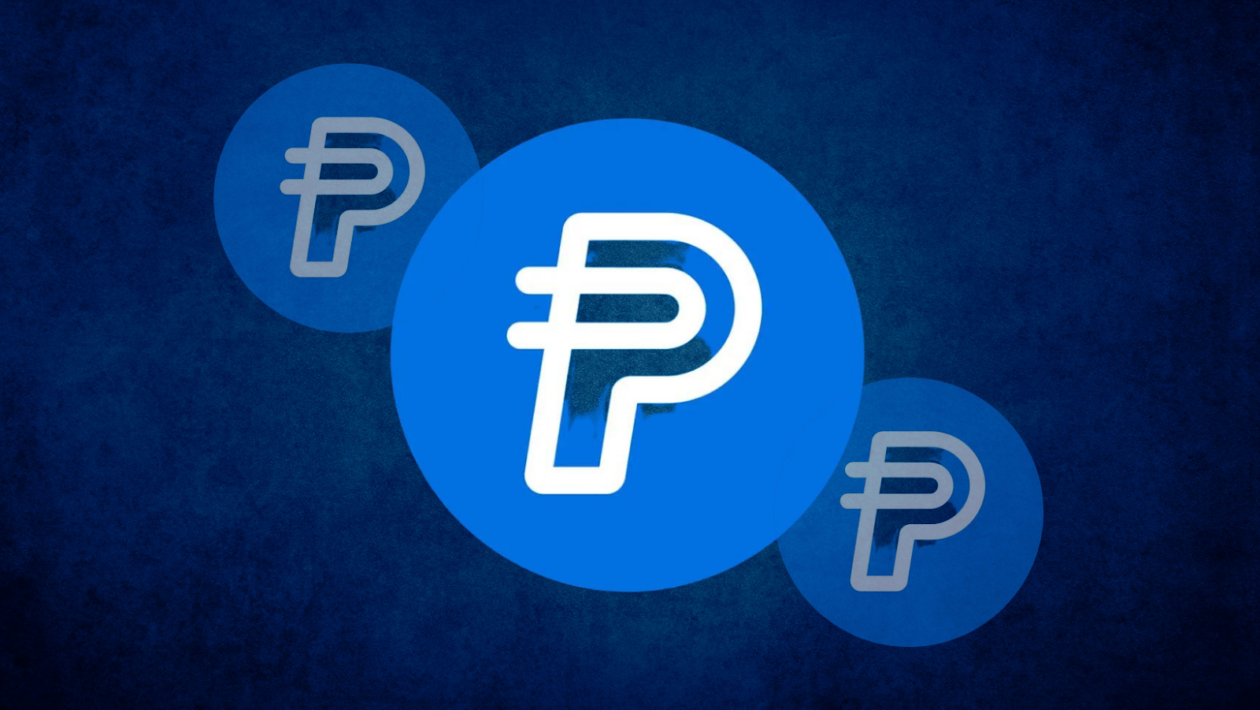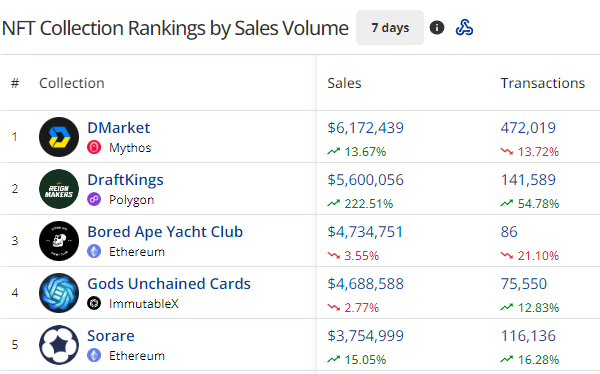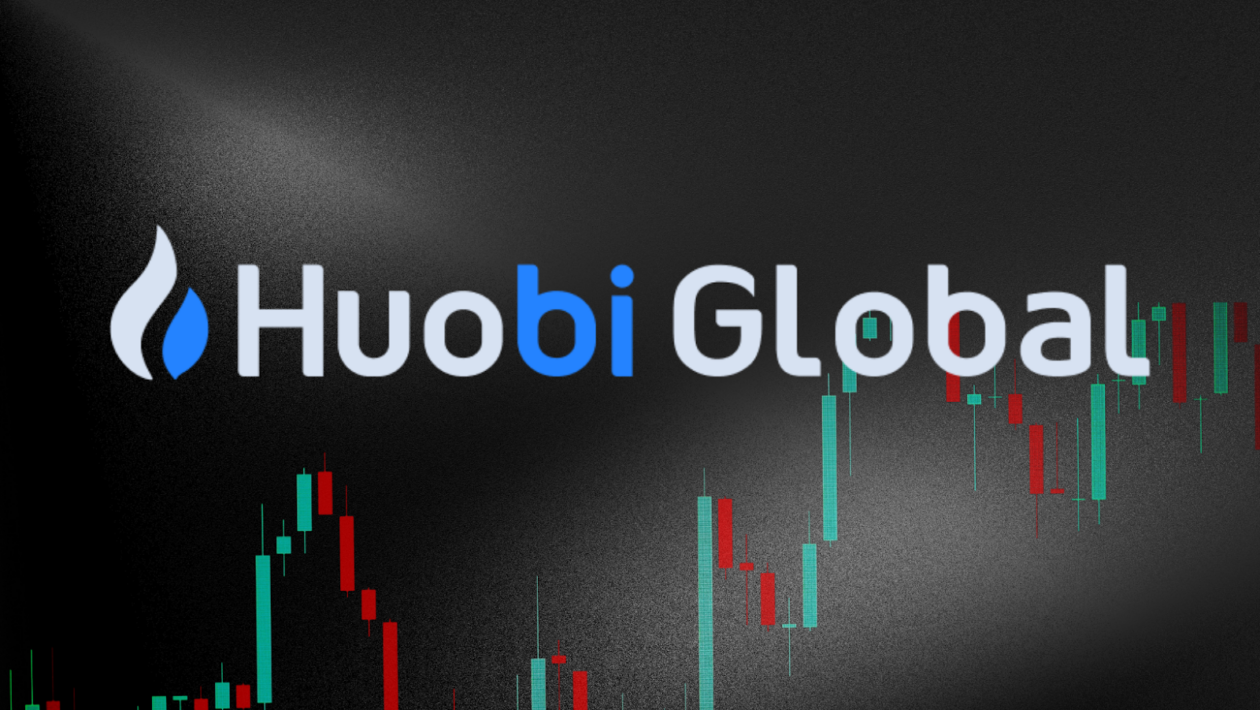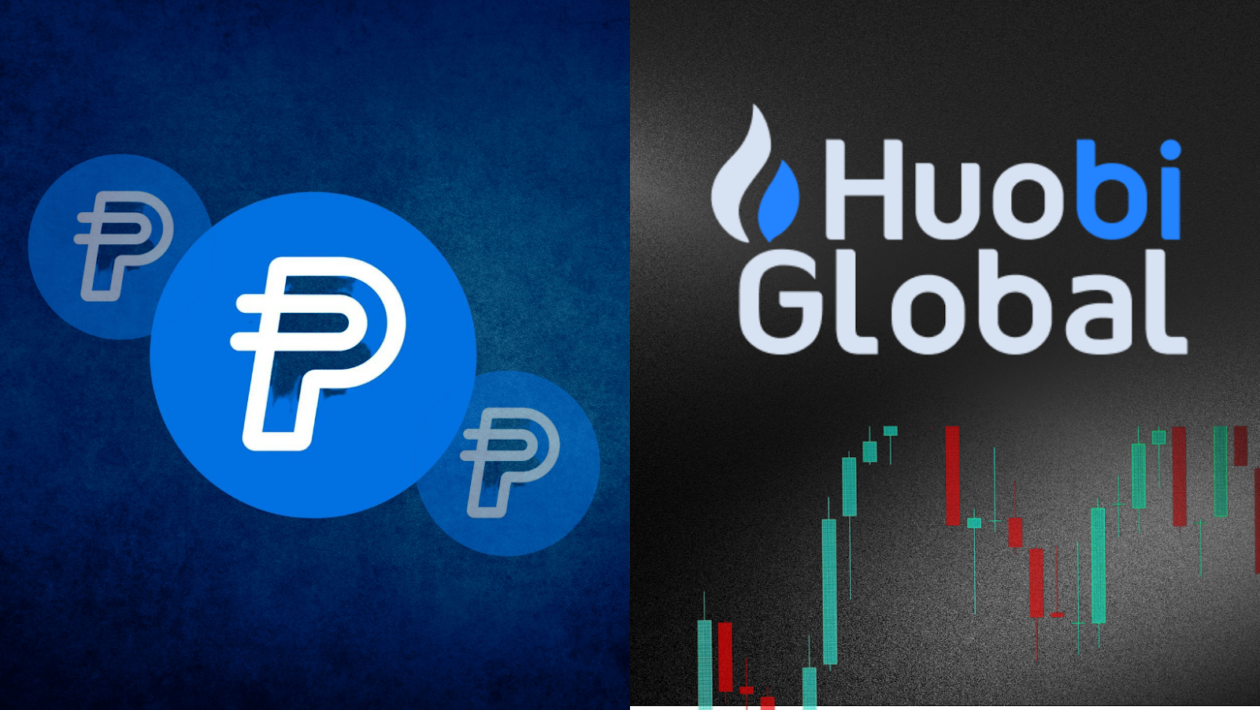In this issue
- Paypal launches stablecoin: A watershed moment for crypto?
- NFTs: Balancing NFTs and traditional gaming
- Huobi’s woes: Investigations, market talk of insolvency
From the Editor’s Desk
Dear Reader,
There’s never a dull moment in the crypto space.
This week, as exciting news breaks that PayPal has launched its own stablecoin, there’s also a drip-drip of claim and counterclaim — a cocktail of conjecture, rumors and denials — about whether or not Huobi, one of the world’s biggest crypto exchanges, is about to become insolvent. And if that weren’t enough, worries about Tether, the world’s biggest stablecoin, appear to be resurfacing.
The frisson of danger really does keep one on one’s toes, doesn’t it?
Anyway, PayPal’s new stablecoin, PYUSD, is a welcome addition to the crypto ecosystem, helping to bring it further into the mainstream. Even Jeremy Allaire, the boss of Circle, whose USDC stablecoin PYUSD will compete with, this week heaped praise on its launch.
Tether Chief Technical Officer Paolo Ardoino was also positive, predicting that the new coin’s launch would have no impact on USDT.
But Tether’s executives may want to pause for thought as they eye the heightened risks that their own stablecoin may be facing amid an apparent USDT selloff by Binance, the world’s biggest crypto exchange, and the fact that USDT lost its secondary market dollar peg on July 31 and spent most of the past 10 days in the red.
Tether has faced choppy conditions before, related to general concerns over its largely unregulated operations, and to specific suspicions about its reserves, which it has never submitted to an unrestricted, third-party audit, and which two years were found by a U.S. judge to have sometimes been a long way short of adequate to back USDT.
Nevertheless, in a recent Forkast Word on the Block conversation, Ardoino expressed confidence about Tether’s ability to handle redemptions. He pointed to the run that USDT experienced last year, saying that in 48 hours, Tether had been able to redeem US$7 billion, 10% of its reserves, and that in 20 days, the company had processed some US$20 billion in redemptions, 25% of its reserves. He said Tether could have redeemed yet more.
Tether may have — and need — such an existentially important buffer. Because this time around, things could get uglier.
The tremors around Tether in recent days may simply reflect worries that Huobi customers will dump their USDT holdings at rock-bottom prices if the exchange looks as though it’s about to crash and burn, leading to an extended USDT depegging. Or, more worryingly, that with Binance leading a broader selloff, a full-scale run on USDT may be in the works.
We, for one, hope that neither scenario comes to pass. But in our relatively still young industry, anything can happen.
Until the next time,
Angie Lau,
Founder and Editor-in-Chief
Forkast.News
1. Efficient coexistence

California-based online payments giant PayPal on Monday launched an Ethereum blockchain-based stablecoin pegged to the U.S. dollar. PayPal, which reported US$7.3 billion in second-quarter revenue, said its fully-backed, regulated stablecoin can bridge the gap between fiat currencies and the blockchain for consumers, merchants and developers.
- “Considering PayPal’s role as one of the biggest market giants in the digital payment ecosystem, the stablecoin launch is a watershed moment in the history of the crypto ecosystem,” Alex Vasiliev, co-founder and chief commercial officer at U.K.-based fintech firm Mercuryo, said in an emailed comment. He added that the launch of PayPal USD is “a testament to the fact that both crypto and the TradFi ecosystem can indeed co-exist efficiently.”
- The new stablecoin, PayPal USD (PYUSD), is backed by U.S. dollar deposits, short-term U.S. Treasuries and similar cash equivalents. PayPal will roll out the token in the coming weeks and make it available on Venmo, a peer-to-peer payment application owned by PayPal, at an unspecified later date.
- PYUSD users will be able to transfer the stablecoin to compatible external wallets, and use the token for person-to-person transactions, funding purchases at checkouts and buying foreign currencies. Also, any cryptocurrencies supported by PayPal can be converted to and from PYUSD.
- PYUSD is issued by Paxos Trust Company, the U.S.-based issuer of Binance’s BUSD stablecoin. Paypal confirmed it was considering a stablecoin issuance as early as January 2022, but halted the project in February this year amid increased scrutiny from U.S. regulators toward stablecoins — including an order for Paxos to stop minting BUSD.
- “We are interested in cryptocurrencies because we do believe that they have the ability to transform the payment ecosystem,” Jose Fernandez da Ponte, the general manager for blockchain and digital currencies at PayPal, told Bloomberg on Wednesday. “In terms of the cost of transactions, in terms of the settlement time, in terms of the programmability of the tokens, you just can do things you couldn’t do with traditional payment.”
Forkast.Insights | What does it mean?
In October 2020, PayPal spearheaded a major market shift by integrating Bitcoin and cryptocurrency services, a precursor to the successive rally that marked Bitcoin’s price above the US$11,000 benchmark. Now, nearly three years later, the fintech heavyweight is under the spotlight again with the introduction of its own stablecoin, PYUSD, targeting its base of 430 million active users, albeit with an initial focus on U.S. customers.
While the market largely welcomed PYUSD with optimism, some features caught the attention of crypto enthusiasts and analysts. Smart contract auditors highlighted a specific function in PayPal’s stablecoin: the ability to freeze and erase users’ assets. Although this central authority isn’t entirely unique to PYUSD, Tether’s USDT and Circle’s USDC being prime examples, the power to entirely delete a user’s holdings raises eyebrows.
For beginners, traditional finance platforms like PayPal and Robinhood can be efficient gateways into the realm of digital assets. Yet, as a beginner’s crypto journey progresses, the core ethos of cryptocurrencies — to establish financial autonomy — becomes apparent. The previous year’s events, such as the FTX bankruptcy, underscored the vulnerabilities associated with centralized systems, from freezes to potential insolvencies, driving a surge in hardware wallet adoption.
Theoretically, decentralized or algorithmic stablecoins promise to offer immunity from censorship. However, an idealistic decentralized stablecoin — boasting significant market value and resilient peg sustainability in volatile conditions — remains elusive. The shortcomings of projects like Terra’s UST are cases in point.
While innovations like PYUSD fortify cryptocurrency’s mainstream presence, they also emphasize the ever-present debate between centralization and true financial autonomy. As the market evolves, user understanding of these nuances will play a crucial role in shaping adoption and preference trajectories.
2. Game on

The popularity of games is surging in the non-fungible tokens market, with four of the top five NFT collections on CryptoSlam this week representing mainstream adoption of gaming NFTs.
- Combined, the four collections traded for US$20.2 million and represented one-fifth of the week’s US$99.9 million in total NFT sales across blockchains. Coming from four unique blockchains — Mythos Chain, Polygon, ImmutableX and Ethereum — a multi-chain future for NFTs has never been more evident.
- DMarket’s CS:GO, Dota 2, Rust and other game skins are driving over US$6 million in secondary sales volume and show the appeal of skins in mainstream video games.
- DraftKings Reinmakers Fantasy Football is seeing a major boost ahead of the NFL season, trading over US$5.6 million on the Polygon blockchain.
- Gods Unchained Cards haven’t left CryptoSlam’s top 10 collections since its listing on the Epic Game Store. This is the highest volume NFT collection on the ImmutableX blockchain.
- Sorare’s fantasy soccer and baseball has been leading the way for NFT utility in games since 2018 and together with DraftKings reflect a bright future for fantasy sports backed by NFTs.
Forkast.Insights | What does it mean?
Many thought 2022 would be the year for play-to-earn gaming in NFTs. But whether the games weren’t quite ready to be played, or if it was gamers who weren’t ready to play them, play-to-earn never materialized. Today’s NFT landscape is unrecognizable from 2022, with a market that offers almost no profits for sellers. This week, sellers are down US$2.9 million in their trades, but specific profitable ecosystems are now rising to the top, like DMarket, where sellers have seen a profit of US$188,000 so far this week.
DMarket, DraftKings, Gods Unchained and Sorare’s seven-day sales are evidence that a shift is underway in the NFT ecosystem. Each of these collections offers much more affordable NFTs (many priced at just a few dollars), huge trading volume in large supply collections, and more realistic gains that traders probably would have ignored if they were still making profits flipping NFTs. They also have major brand recognition, offering NFTs from CounterStrike Go, MLB, and the NFL. With IP that is recognizable around the world, and prices that just make sense, this is beginning to look like the vision we had for NFTs that would be adopted by the masses.
Gamers’ appetite for NFTs will be tested soon with multiple large NFT games on the horizon, like Parallel, Land of Valeria, Battle Plan!, and the newly announced Animoca-backed Wreck League. Each of these games have been incubating for years, but it’s Wreck League that may tell us the most about how gaming NFTs will fare with more typical gamers.
Coming from nWay, the developers of Power Rangers: Battle for the Grid which saw downloads of over 80 million, Wreck League is kicking off their game in September with one of the biggest Web3 brands in the world, Yuga Labs. This will mark the first appearance of Yuga Labs’ IP outside of their own gaming world, when Kodas and Bored Apes will arrive in mech form in Wreck League. It’s a major milestone for the collection, but also for NFTs, given that there’s now a chance we’ll see these iconic NFTs next to huge traditional IP.
The real test is in the traditional gaming world, where gamers have so far shunned NFTs. Or have they? Starbucks NFTs have been extremely profitable for all primary buyers, and we’ve witnessed the success of DMarket, DraftKings, Sorare, and Gods Unchained now for months. Perhaps the key is as simple as not calling them NFTs, which is what each of the hot collections above have excelled at.
NWay needs to find a balance between delivering a rewarding NFT experience for the Web3 audience, and keeping traditional gamers away from NFTs entirely. This is a tightrope that they will walk with two separate versions of the game, but shhh, don’t tell the traditional gamers that their version’s marketplace contains some NFT-assembled skins from the blockchain version of the game.
If Wreck League is a success with gamers, consider the door to the blockchain blown wide open, and get ready for NFT gaming to really explode. But let’s not get ahead of ourselves yet. We’re on level 1-1, and it’s time to put our game face on and grind.
3. Trouble ahead

Huobi Global’s stablecoin exchange balance declined by 51% in the past seven days, an outflow of over US$105 million, according to data from blockchain analytics firm Nansen, as the Seychelles-based crypto exchange faces market talk of insolvency and investigations of its executives by Chinese police.
- Crypto analyst Adam Cochran highlighted Sunday a potential insolvency issue in Huobi, and said Huobi advisor and stakeholder Justin Sun — who is also the founder of the Tron blockchain — had used Huobi “as a personal piggy bank to earn from user deposits.”
- Cochran’s insolvency allegation is based on stUSDT, an investment product launched by Tron, which claims to be backed by government bonds and allows investors to stake their USDTs to earn yields. However, on-chain data showed 98% of the staked USDTs were directly held by addresses related to Sun or Huobi, with a significant proportion sent into Sun’s other decentralized finance positions, according to Cochran.
- Although Huobi’s “Merkle Tree Audit” showed on July 1 that Huobi users held $630 million of USDT and the platform had a USDT balance of $631 million, the audit stopped updating last month and DefiLlama data showed the exchange only held a combined USDT and USDC balance of around US$93 million when Cochran posted his tweets over the weekend. This could put the exchange at risk of failing to honor customers’ withdrawal requests.
- Adding to Huobi’s headache, Hong Kong online media outlet Techub News reported Saturday that several of Huobi’s executives were detained by the Chinese police and were under investigation, citing unnamed sources. Cochran also pointed to the news as a sign of Huobi’s potential insolvency.
- Huobi said in a Monday blog that “the Huobi platform is operating as usual,” but did not mention the alleged insolvency or investigation.
- On Tuesday, an address related to Sun transferred 200 million USDT to Huobi, according to crypto data tracker PeckShield Alert, which boosted the exchange’s USDT balance to 273.54 million. Huobi later received a single inflow of 5,000 ETH (over US$9.16 million) from another address linked to Sun. However, a Huobi spokesperson has denied Sun owned the above addresses.
Forkast.Insights | What does it mean?
Crypto analyst Adam Cochran’s allegation that Justin Sun used Huobi “as a personal piggy bank” has a certain wry appeal, but it probably also creates a degree of nausea among those who paid any attention whatsoever to the sleazy goings-on associated with the collapse of Sam Bankman-Fried’s FTX exchange.
The last thing the crypto industry needs as it gains renewed traction following last year’s blowouts is another wealth-destroying (or wealth-transferring, depending on how one looks at it) catastrophe.
Yet the conclusion that it faces one is not foregone. At the moment, what we have to go on is a trail of breadcrumbs laid by Cochran — who has form when it comes to ripping crypto exchanges a new one on social media — relating to “weird” USDT balance shifts and Huobi’s predictable counterclaims. And, of course, various voices in the cryptosphere who have variously been saying that Huobi is either just fine or that it’s teetering on the precipice. So far, so inconclusive.
The apparent transfer of 200 million USDT to Huobi from an address seemingly linked to Sun, and another of 5,000 ETH, also from an address purportedly tied to him, may to some look suspiciously like an exercise in damage control. Frustratingly, however, they too are not conclusively anything of the sort.
So, all of this doesn’t get us much closer to knowing whether or not Huobi is on the verge of tanking.
If Huobi and Sun — who outdid SBF in acquiring a fraud charge even before the exchange associated with his name started wobbling — go the way of FTX, it’ll certainly be an unwelcome setback for crypto, although not on the scale of the mess that the kid with the bad hair made.
However, if the US$83.5 billion edifice that is Tether – whose reserves remain the subject of some controversy, to put it mildly – is subject to a panicked run and goes south, the industry will be in a great deal more peril.




